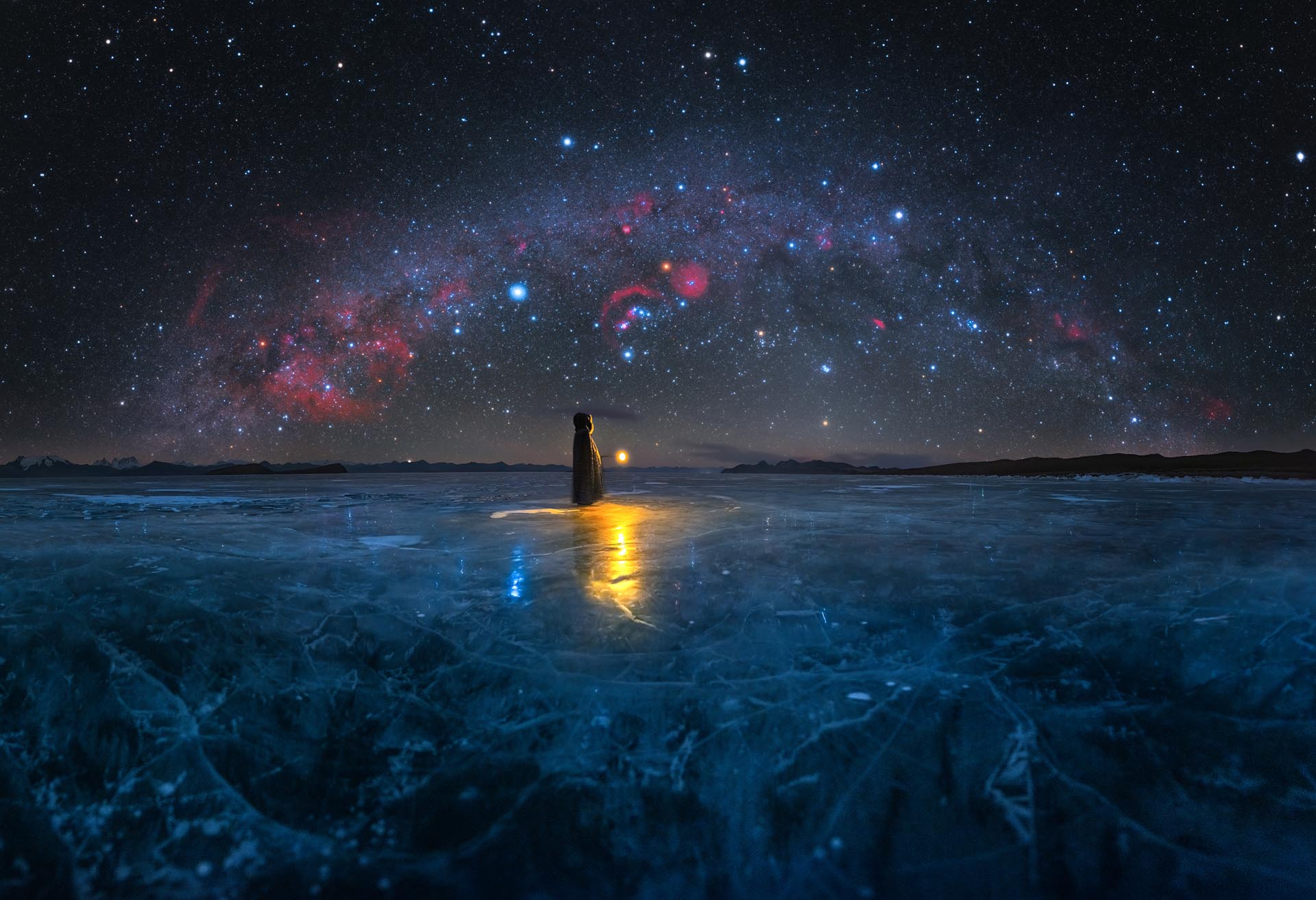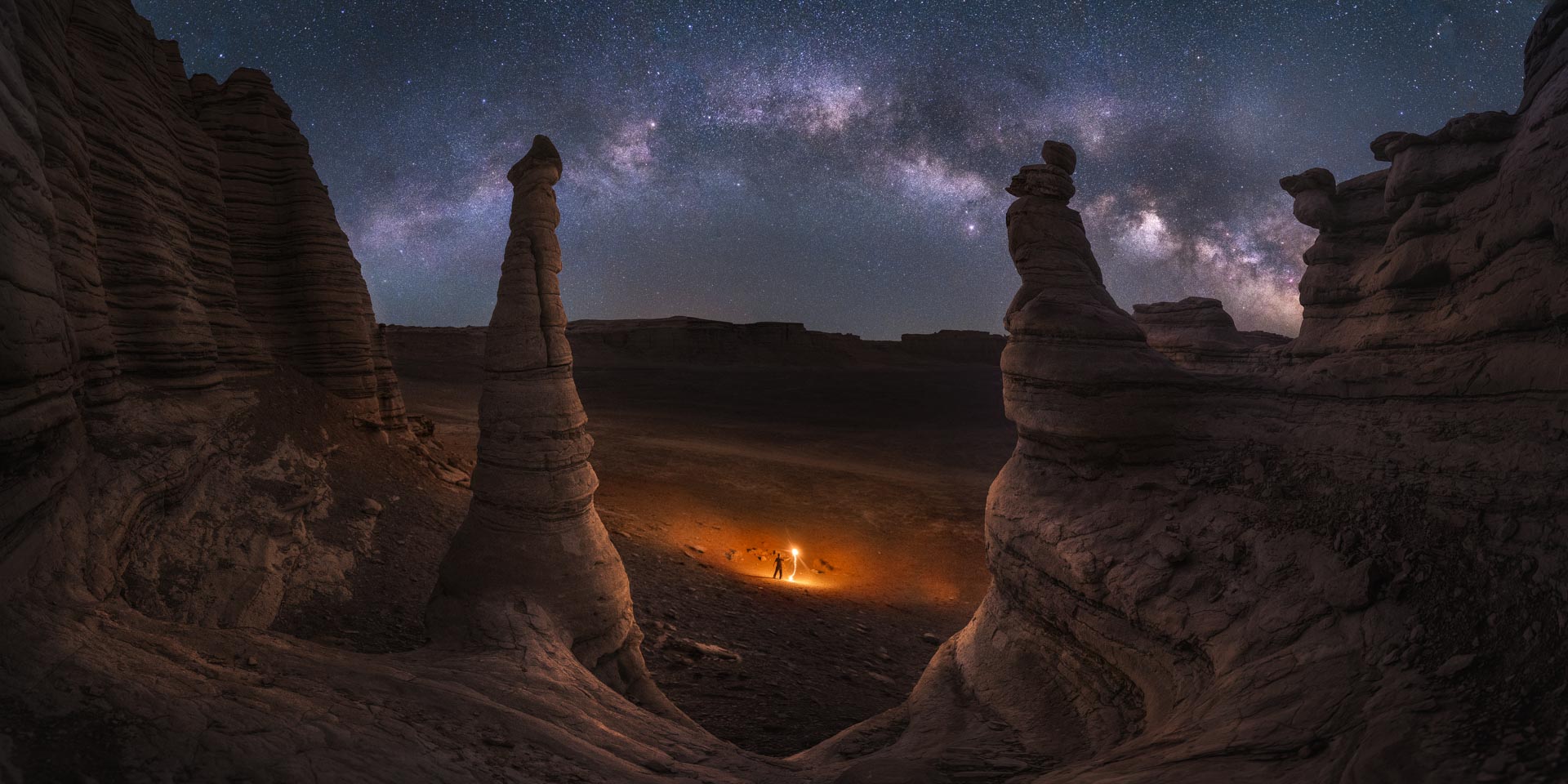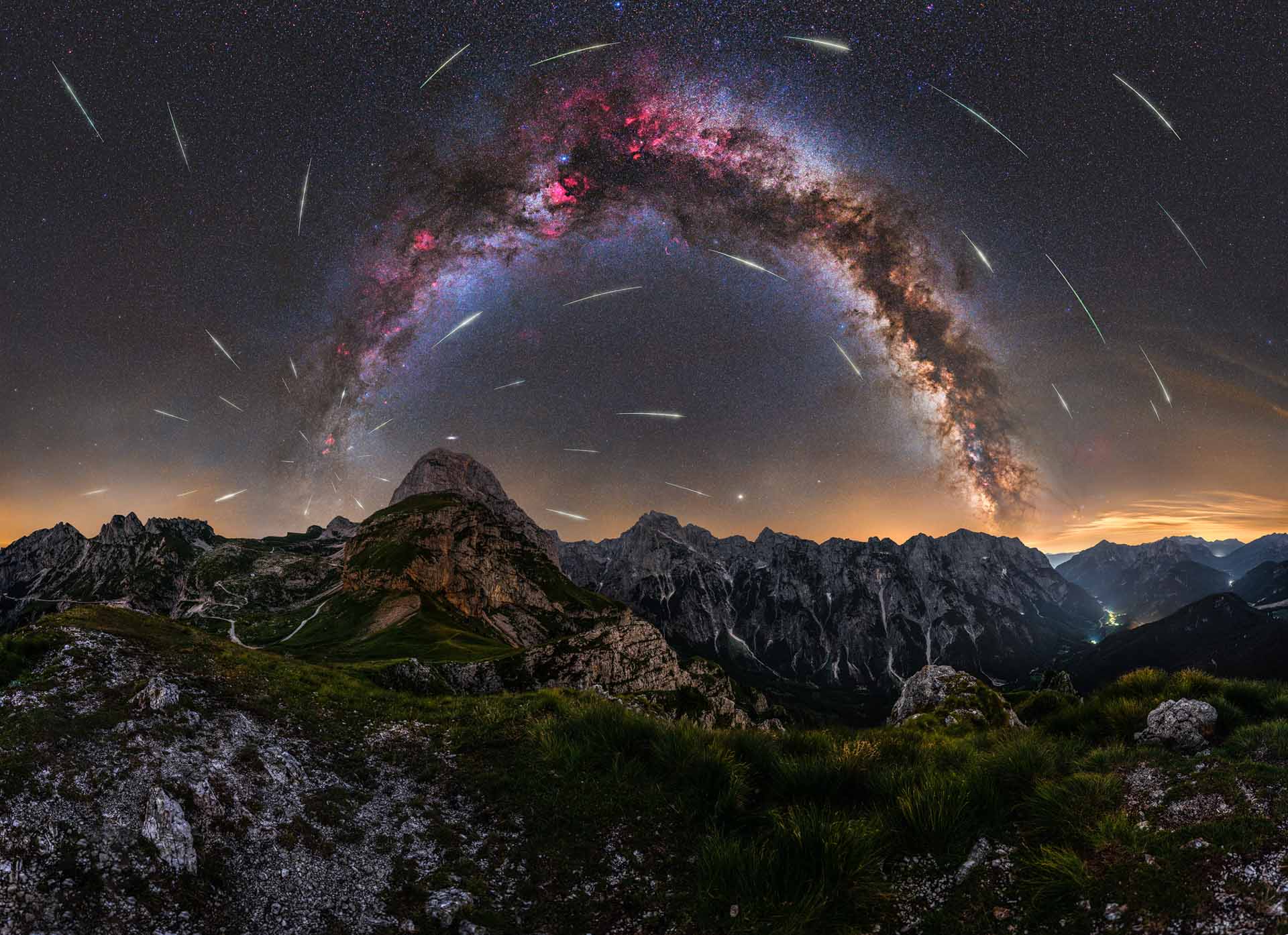Are you doomscrolling at work? Maybe you’re looking at TikToks and Instagram Reels again because, who wants to face the impending doom of the climate crisis? If you must scroll and incidentally develop carpal tunnel syndrome, you should probably see these stunning images from our galaxy, the Milky Way.
Our ever-expanding galaxy is a strange place. It likes to steal stars from other galaxies while mysteriously distorting. In about four billion years, it’s expected to collide with another galaxy, Andromeda, but until then, we have these starry images to keep with us.
Videos by VICE
Every year, the travel blog Capture the Atlas releases 25 best photos of the Milky Way from various countries. The month of May is the peak of the Milky Way season, which ranges from February to October in the northern hemisphere, and from January to November in the southern hemisphere. This year’s best photographs are from 12 countries including Egypt, Slovenia, Australia, Spain, Japan and the U.S.
“Ice Age” by Alvin Wu in Tibet

Taken at an altitude 5,070 metres (16,600 feet), this photo shows the Pumoungcuo lake as it freezes in winter. When temperatures dip to minus 20 degrees Celsius at night, one can even hear the ice crack. “I felt so happy to have the stars as my companion on this magical night,” photographer Alvin Wu said in a release by Capture the Atlas.
“Lightning the Milky Way” by Jingye He in Xinjiang, China

This view of the Milky Way is from a no-man’s-land in Xinjiang, the Dahaidao Desert. Fierce winds and weather conditions caused this area to erode into separate hills that take the unique shape of a yardang.
“Secret” by Martin Zajac in U.S.

Native Americans carved petroglyphs in large volcanic boulders thousands of years ago. They chipped away at the dark surface of the rock, exposing the lighter rock underneath, and formed images of animals and geometric designs. “This photo faces upwards towards the sky, forming a composition of the California Sierra Nevada mountains and the night sky,” said Zajac.
“Winter sky over the mountains” by Tomáš Slovinský in Slovakia

This arc of the Milky Way stretches above the Low Tatras mountains in Slovakia where temperatures dropped to minus 14 degrees Celsius. The winter portion of the Milky Way is thinner, with less visible stars, but it also contains certain objects that are invisible to the naked eye. “These objects are totally visible with an astro-modified camera. To capture this, I used a special H-alpha filter,” said Slovinský. The photograph features a miniscule Slovinský between Mars and two open star clusters, the Pleiades and Hyades.
“The Milky Way arching over The Pinnacles Desert” by Trevor Dobson in Australia

This 180-degree panorama of the Milky Way was taken at The Pinnacles Desert, two hours north of Perth in Western Australia, and is comprised by 124 (!!!) individual shots. “The Pinnacles are such an amazing location for astrophotography,” says Dobson. “The area is littered with thousands of these limestone monoliths, which means that composition possibilities are almost endless, and [it’s] one of the reasons I keep coming back here year after year.”
“House of Lavender” by Benjamin Barakat in France

“I captured this image of the Milky Way last summer in Valensole, France,” said photographer Benjamin Barakat. “The smell and atmosphere of these lavender fields are unreal, and standing there among them in the middle of the night is blissful, especially since the bees have gone to sleep and you don’t risk getting stung!”
“Path to the past” by Jose Manuel Galvan Rangel by Spain

Astrophotographers often travel to the Extremadura region of Spain to click the perfect starry shot. The lack of pollution and city lights makes Extremadura ideal for an astrophotographer. Photographer Jose Manuel Galvan Rangel describes it as a “natural paradise.” “I took this photograph in a remote town in the southwest part of this community called Salvatierra de los Barros,” said Rangel. “In this town that’s practically unheard of by the rest of the world, you’ll find an imposing, privately owned castle that has been standing, under the light of millions of stars, since the fifteenth century.”
“Egyptian Nights” by Burak Esenbey in Egypt

Five hours west of Cairo stands a white desert with photogenic sand dunes and rock formations. “The unique rock formations add to the interesting compositions,” said photographer Burak Esenbey, who shot this picture on his first visit to Egypt. “The white desert was our focus here, in a place full of nature and Bortle 1-2 skies,” he adds. The Bortle scale is a numerical scale from one to nine that measures the night sky’s brightness, with 1 as the darkest, in which the stars, constellations, etc. are visible, making it ideal for astro photography.
“Perseid meteor shower on Mangart saddle” by Uroš Fink in Sloveni

“I love nature and being somewhere outside under a starry sky in serene silence. That’s when I feel free, but, at the same time, so small,” said photographer Uroš Fink. Fink and his friend planned to shoot in Mangart Saddle, Slovenia, six months in advance but as the night went on, the sky turned cloudy. “I shot a few meteors in the sky, which brightened up the night,” he recalled. “What always excites me about photographing the night sky is that you never know what to expect; surprises are happening all over the sky. You just need to be in the right place at the right time. In the end, the experience never disappoints me in any way.”
“Mt. Fuji and the Milky Way over Lake Kawaguchi” by Takemochi Yuki in Japan

Captured in the Yamanashi Prefecture in Japan, photographer Takemochi Yuki shot this image at 3AM. “This is the only time in spring that you can take a picture of this night view, with Mt. Fuji and the Milky Way,” says Yuki. “In winter, it becomes difficult to reach the road, since it’s covered in snow. When it gets warmer in the summer, the Milky Way rises to the west and it’s out of frame. I photographed different exposures for the different areas of the scene to balance all the light.”
Follow Jaishree on Twitter and Instagram.




